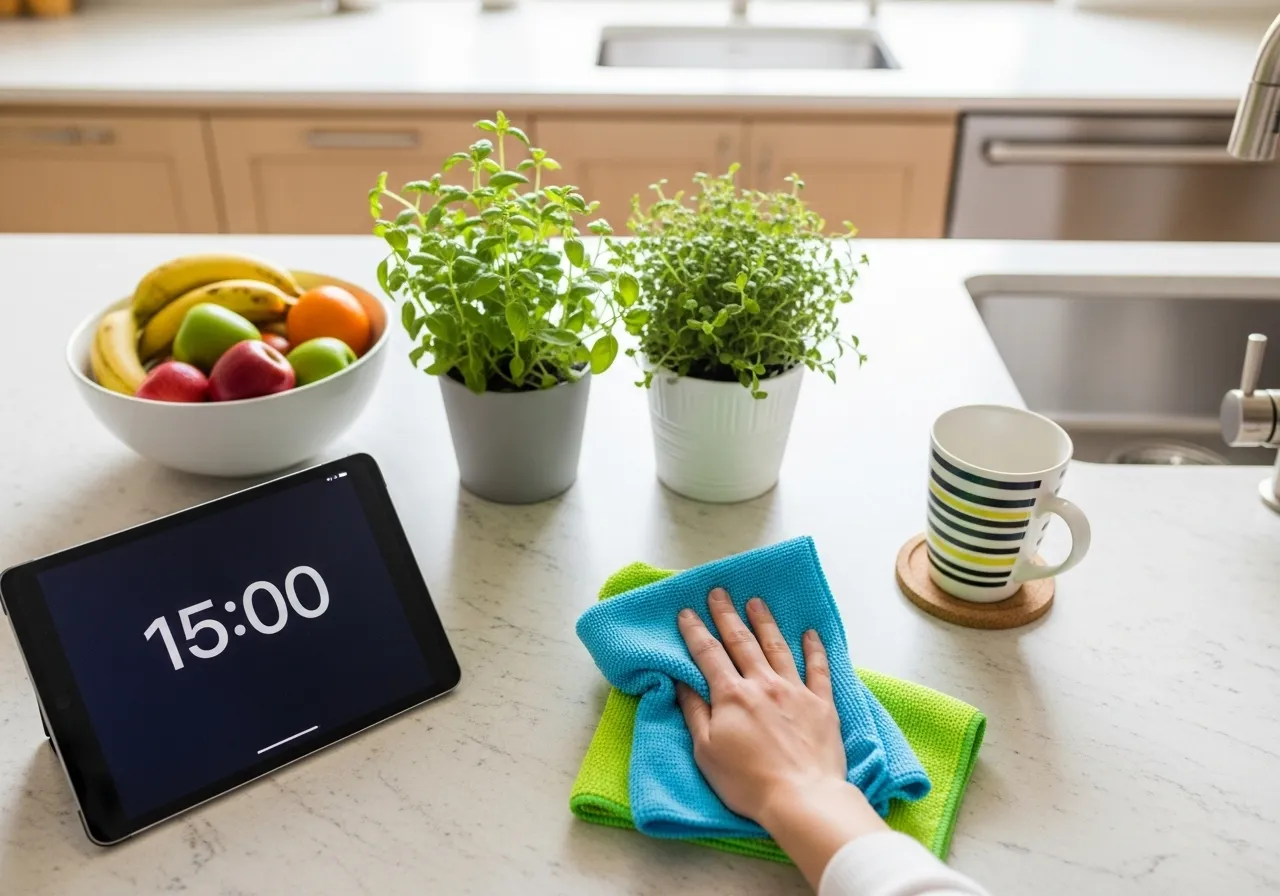
Creating an Accessible Cleaning Routine That Works for You
The best cleaning tools in the world are only half the equation. The other half is your approach. A strategic, mindful routine can prevent the physical and mental overwhelm that often comes with household chores. The goal is to maintain a clean home without pushing your body past its limits.
Pacing and Batching: The 15-Minute Rule
Instead of dedicating an entire Saturday to a cleaning marathon, which is sure to cause pain and fatigue, break the work into small, manageable chunks. This strategy, sometimes called “batching,” involves assigning one or two small tasks to each day. It prevents messes from piling up and keeps the physical effort low and consistent.
A great way to implement this is the 15-minute rule. Set a timer for 15 minutes and tackle one task. When the timer goes off, you are done for the day. You’ll be amazed at what you can accomplish in that short time.
Here’s a sample weekly schedule:
Monday (15 mins): Dust living room surfaces.
Tuesday (15 mins): Clean bathroom sinks and toilets.
Wednesday (15 mins): Vacuum the main living area.
Thursday (15 mins): Wipe down kitchen counters and stovetop.
Friday (15 mins): Mop the kitchen floor.
This approach spreads about 75 minutes of work across the week, avoiding the strain of a multi-hour cleaning session. It’s a sustainable system that helps maintain a consistently clean home with minimal physical cost.
Arranging Your Home for Easier Cleaning
Your home’s layout and organization can either help or hinder your cleaning efforts. A few simple adjustments can make a big difference.
Store Supplies Where You Use Them: Keep a small set of bathroom cleaning supplies under the bathroom sink and kitchen supplies under the kitchen sink. This eliminates the need to carry bottles back and forth from a central storage location.
Keep Floors Clear: Clutter on the floor is the biggest obstacle to easy vacuuming and mopping. Use baskets and bins to keep items like shoes, magazines, and toys contained and off the floor. This not only makes cleaning faster but also reduces tripping hazards, a key safety concern for anyone with mobility challenges.
Respect the “Reach Zone”: Organize your closets and cabinets so that the items you use most frequently are on shelves between your shoulder and hip height. This is your primary “reach zone” and requires the least amount of bending or stretching. Heavier items should always be stored at this level to minimize lifting strain. Lighter, less frequently used items can go on higher or lower shelves.


















One Response
Gracias por las recomendaciones. Las necesitaba